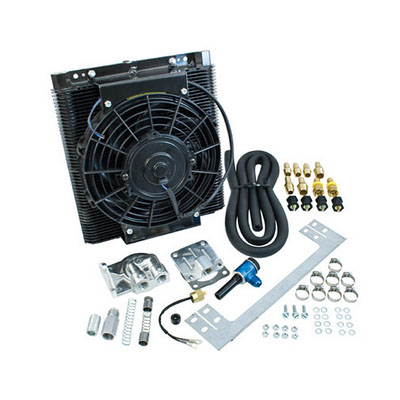Randy -- Actually, I don't have a speedster, rather a mid-engined spyder (that I built myself). So I wouldn't be able to give you speedster specific technical information by- manufacturer. But as a generality, all of us Type 1 folks share similar engine/trans mechanicals and experiences. I have a 2332, and engine cooling is a big deal.
As far as parts source, pick any of the familiar VW on-line parts catalogs; the fan they show with the usual 96 plate cooler is the one I would have chosen. [ Edit: Which is the same one Wolfgang pictured in his post immediately above. ] My guess is it's the same kind of fan nearly all of us have. Although there are more expensive and presumably better alternatives available, I think the "standard" fan is adequate and easy/economical to replace if necessary.
I think my fans fail as a matter of degrading over time due to the high temperature under the hood. But that's just an opinion.
ALB -- My fan runs until the temperature of the metal sensor switch drops below the cutoff temperature. My sensor switch is not under the direct flow of the fan, so the time it takes the fan to turn off is related merely to ambient cooling of the sensor switch and how hot everything was to start with. On the hottest of the hot, maybe 5-10 minutes. On a cool day, maybe 1-3 minutes.
Your point is well stated, the cooling radiator doesn't hold a lot of oil. So, "pre-cooling" that small amount of oil between engine runs Is probably not imperative. On the other hand, it does't hurt either. As mentioned, my motive for letting the fan run is not specifically to cool the oil in the radiator (it can cool by itself), rather; I want to hear the fan wailing so that I know it will be maximum efficient when it comes time I do need it most.


